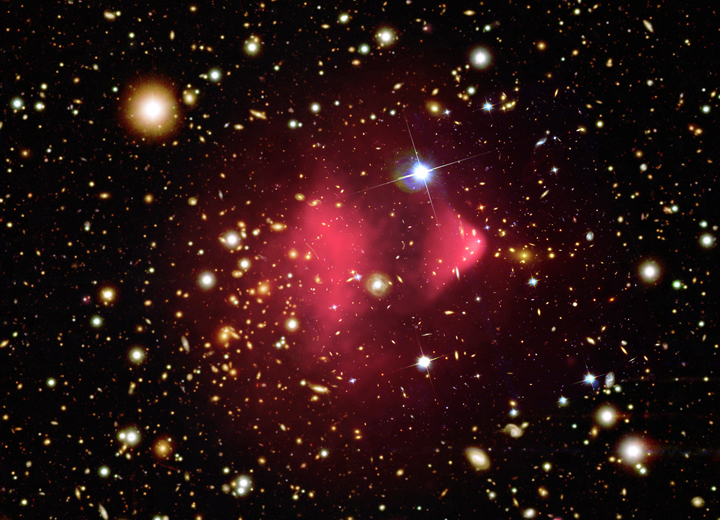As predicted, the NASA telecon on Chandra results was on followup studies of the "bullet cluster".
Press release is here.
Lots of pretty pictures.

"This is the type of result that future theories will have to take into account," said Sean Carroll, a cosmologist at the University of Chicago.
As opposed to the other type of results? ;-)
As I recall there are two types of results: observational and theoretical.
Seriously, the selling point is that they see the baryons in the hot gas (which dominates the normal matter in these clusters - they see the galaxies too, of course, but they don't mass much), and the auxillary data like lensing shows the mass, dominated by dark matter; and they're separated, since the gas is not in hydrodynamic equilibrium with the mass.
This could severly curtail alternative gravity theories like MOND, until a future theorist takes it into account and finds a fudge around the resuls.
Lather, Rinse, Repeat.
- Log in to post comments

Marusa, one of the collaborators on this project, asked me if I could make an animation of a cluster collision like the Bullet Cluster last week for a press release. I agreed and produced a nice 3D visualization from data produced from Enzo. This morning I was disappointed to see that the NASA press release didn't use my video. But the SLAC and NSF releases do use it. I hope you like it, too.
In trying to match the observations, I noticed that one could learn plenty from the final results' dependence on initial conditions, i.e. impact velocity and parameters, gas fraction, gas temperatures, density concentrations, and also the importance physics in the clusters themselves. But I don't see myself doing this work in the near future but can definitely see the benefit of comparing to cluster simulations.